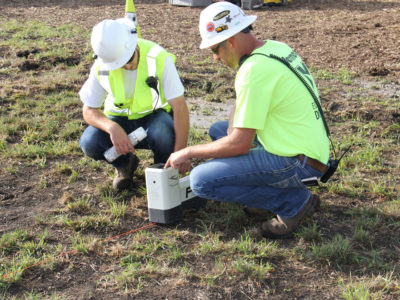As urbanization accelerates and infrastructure ages, the demand for innovative, non-invasive underground construction techniques continues to rise. Among the many technologies that have revolutionized this sector, trenchless technology stands out as a sustainable, efficient alternative to traditional excavation. At the core of this evolution lies the growing importance of precision boring—a process heavily reliant on the accurate guidance provided by drill head locators.
Drill head locators are critical instruments used in horizontal directional drilling (HDD) and other trenchless methods to track and guide the position of the drill head underground. Their role has expanded significantly in recent years as projects become more complex, demanding greater accuracy and safety. This article explores the function, types, and benefits of drill head locators and how they contribute to precision boring in modern trenchless technology.
What Are Drill Head Locators?
Drill head locators are electronic systems designed to determine the real-time position, depth, and orientation of a drill head during a bore. They operate by receiving signals from a transmitter embedded within the drill head. These signals are processed and interpreted by a receiver at the surface, providing the drill operator with live feedback on the bore’s trajectory.
This feedback loop allows for precise steering adjustments, helping avoid obstacles, stay within a predetermined bore path, and ensure that the underground utility is installed exactly where it needs to be. In trenchless operations, where visibility is limited and excavation is minimal, drill head locators serve as the eyes of the drilling process.
The Importance of Precision in Trenchless Technology
Trenchless methods like HDD, pipe bursting, and microtunneling are widely used for installing utilities under roads, rivers, railways, and buildings with minimal surface disruption. While these methods reduce environmental impact and community disturbance, they demand exceptional accuracy to prevent costly errors.
Missing the intended bore path can result in damage to existing underground infrastructure, environmental hazards, and expensive rework. Precision boring ensures that utilities are placed exactly where planned, reducing liability and increasing the reliability of underground systems. Drill head locators play a crucial role in achieving this level of accuracy, especially in environments with high utility density.
Types of Drill Head Locators
There are several types of drill head locators, each suited to different job site conditions and levels of complexity. The most commonly used systems include:
1. Walkover Locators
Walkover locators are widely used in HDD operations. These systems involve a transmitter (also known as a sonde) in the drill head and a handheld receiver that an operator carries above ground. The receiver detects the signal and provides information such as depth, pitch, and heading. Walkover systems are ideal for relatively shallow bores in open areas.
2. Wireline Locators
Used in deeper or more complex bores, wireline systems provide continuous communication between the drill head and the surface via a wire. These systems offer high-precision data and are preferred in challenging geological conditions. They are more complex and typically used in long-distance or large-diameter bores.
3. Gyroscopic Locators
Gyroscopic systems do not rely on electromagnetic signals, making them ideal for areas with interference from existing utilities or metal structures. These locators use internal gyroscopes to track the drill head’s position, making them suitable for urban environments and highly sensitive applications.
Each system has its advantages and trade-offs, but all share the fundamental purpose of improving the accuracy and safety of trenchless drilling operations.
Advantages of Using Drill Head Locators
The integration of drill head locators into trenchless technology provides a range of benefits that enhance project success rates and reduce operational risks:
-
Real-Time Tracking: Operators receive immediate feedback on the location and orientation of the drill head, allowing for quick adjustments and informed decision-making.
-
Obstacle Avoidance: Locators help avoid underground hazards such as gas lines, water mains, and electrical conduits by keeping the drill path within the safe zone.
-
Reduced Surface Disruption: By eliminating the need for exploratory excavation, drill head locators contribute to the minimal surface disturbance that trenchless technology promises.
-
Lower Project Costs: Accurate drilling reduces the risk of damage and rework, leading to cost savings in both labor and materials.
-
Enhanced Safety: The ability to track and control the bore path helps prevent accidents and ensures compliance with safety regulations.
Challenges and Innovations
While drill head locators have become indispensable, they are not without challenges. Signal interference from nearby utilities, depth limitations, and environmental conditions like rocky soil or groundwater can complicate tracking efforts. However, ongoing innovation in sensor technology, digital signal processing, and integration with GPS and GIS systems continues to improve their reliability and performance.
Modern locators now offer advanced features such as touchscreen displays, wireless data transmission, automated logging, and compatibility with cloud-based project management tools. Some systems can even overlay bore paths on satellite maps in real time, enabling remote monitoring and better documentation.
Training and Best Practices
Despite technological advancements, the effectiveness of drill head locators still depends on the skill of the operator. Proper training in locator use, data interpretation, and drilling adjustments is essential. Crews should follow best practices such as pre-bore planning, utility locating surveys, regular calibration of equipment, and continuous communication between the drill operator and locator technician.
By investing in training and standardizing operating procedures, contractors can maximize the value of their locator systems and ensure higher success rates for their trenchless projects.
Conclusion
Drill head locators are a cornerstone of precision boring in trenchless technology. As infrastructure demands grow and urban environments become more complex, the need for accurate, safe, and efficient utility installation methods has never been greater. Drill head locators empower contractors and engineers to meet these demands by providing real-time control over underground drilling operations.
